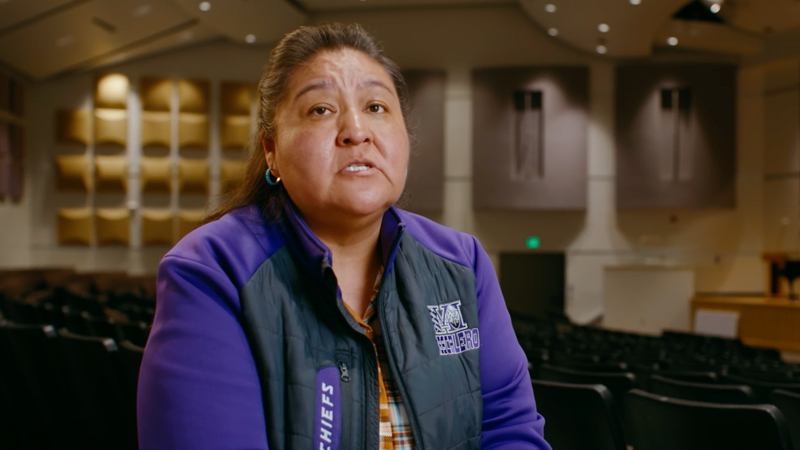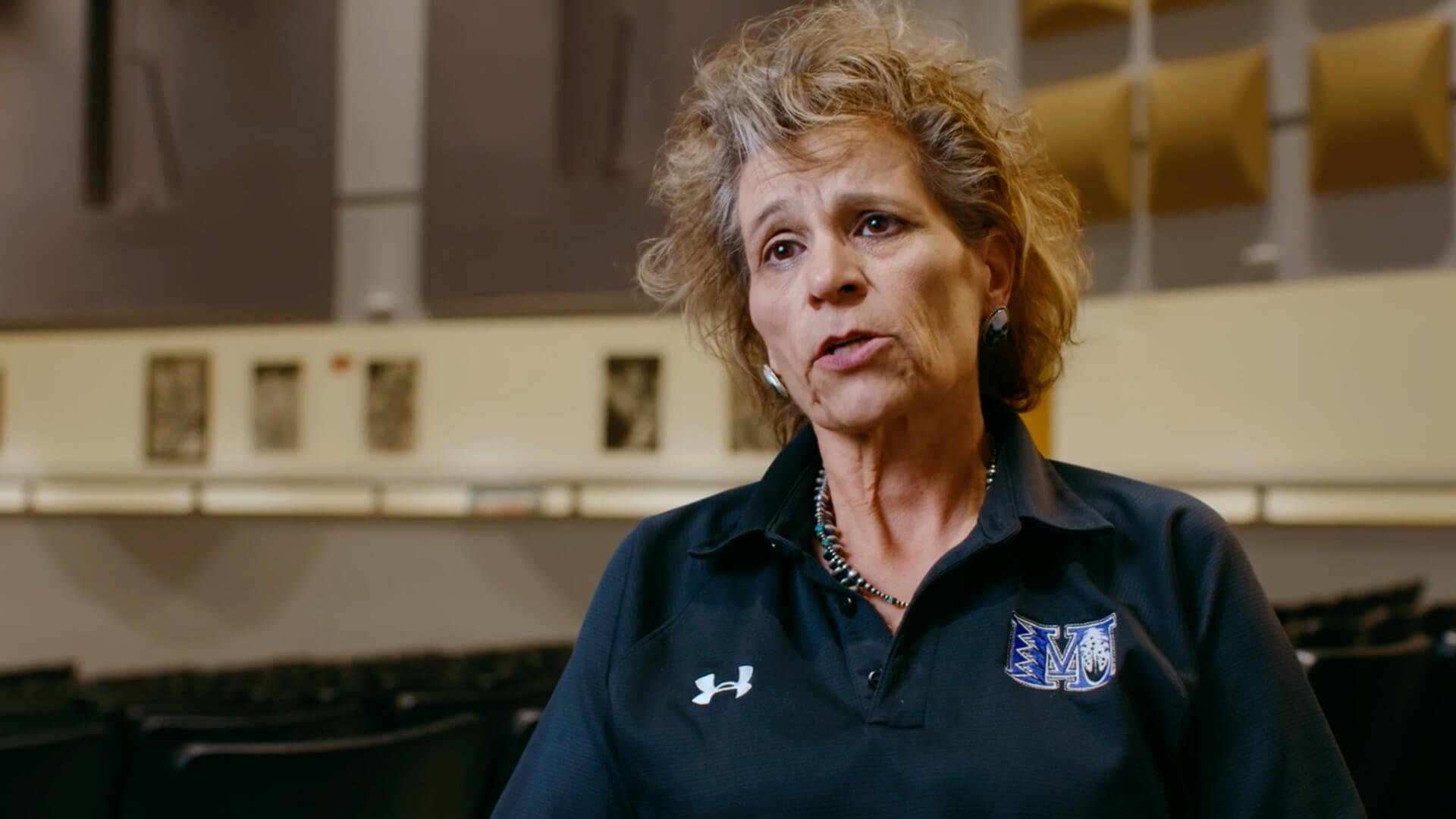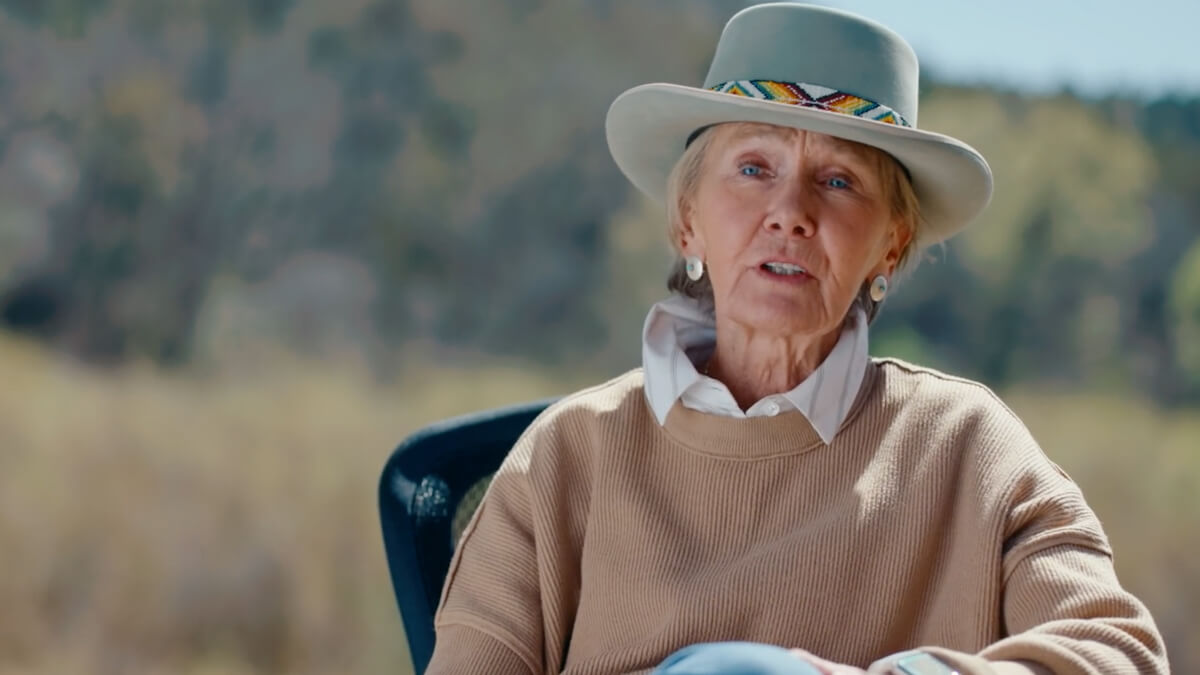Innovation Zones Bring More Opportunities to Mescalero
Students pour into the doors of the Mescalero Apache School (MAS) alongside the morning sun, where they are greeted with smiles and first names by Principal Rosalinda Baeza and a handful of other teachers and staff. Many of the high school students head to the Career and Technical Education (CTE) building first thing to start work on projects that they are getting ready to sell in an auction at the nearby Inn of the Mountain Gods. The proceeds from the auction will go right back into these incredible Career and Technical Educational programs that the school has been developing and expanding with the help of funding and technical support from New Mexico Public Education Department (NMPED) through the Innovation Zone Initiative (IZ).
Launched in 2021, Innovation Zones provide schools with resources and training to develop graduate profiles, implement work-based learning (WBL), Career and Technical Education (CTE), capstone projects, and personalized student supports. Mescalero Apache High School received the IZ grant in 2023-2024 and again in 2024-2025. It’s helped the district increase the size and scope of their CTE pathways and work-based learning (WBL) opportunities. Just in the last few years, the school has been able to add or expand so that they now offer career pathways in Video Production, Culinary Arts, Agriculture, Welding and Manufacturing, Woodworking and Construction, and Art Entrepreneurship. These pathways involve multiple classes, including dual credit options through Eastern New Mexico University (ENMU) and the Institute of American Indian Arts (IAIA), and work-based learning opportunities such as internships and capstone projects out in their community. Students can get certifications and on the job training and graduate high school with work experience, a greater understanding of what they want to do next, and for some, job offers. These exciting changes have dramatically increased attendance and engagement at the school.

—Rosalinda Baeza,
Mescalero Apache
High School Principal

When Principal Baeza first stepped into the school to teach, she wasn't envisioning herself eventually leading the district. She started out as a dedicated middle school math teacher, called to take part in guiding her community's youth. But, as a Mescalero Apache Tribal member, Baeza says of her culture, "it's not about what you want to do, it's about what your teachers and your Tribe need from you." And she felt she was needed as a principal, so that is where she ended up.
In her nearly three decades at the school, Baeza has seen many changes. Some have been hopeful, like the exciting opportunities students are receiving through Innovation Zones. At other times, there have been challenges. As a Tribally controlled school in rural New Mexico, Mescalero Apache Schools receive less funding than public schools in the state, at times forcing leadership to make tough decisions on where to spend their limited resources. The recent increase in funding for Career and Technical Education programs has meant that the school has been able to update a lot of their equipment, as well as adding programs.
Career and Technical Pathways
Down the hall, Alice Velasquez teaches her Agriculture students how to make flower arrangements, which they will sell to community members for upcoming spring holidays — the proceeds from sales, as with those from the auction, will go right back into the program. But, it’s not just flowers in the Ag classroom. At the other end of the room, there is a hydroponics setup — students are growing lettuce, peas, and other vegetables. Some of them are competing nationally through Future Farmers of America (FFA).
“Agriculture is one of the original career and technical education programs,” says Velasquez, who helped start the program and has been teaching at Mescalero for 10 years.

—Alice Velasquez,
Mescalero Apache
High School Teacher

Velasquez says agriculture gets her students out of the classroom and helps them become engaged in school and their community. When she lists the professions her former students hold, only a couple are directly related to agriculture, but she says they are using the lessons they learned to be engaged citizens.
Another popular CTE pathway that’s been around a long time is the MAS Welding/Manufacturing program, which is run by Mike Gaines. Students in the welding pathway can take 4 levels of welding, from intro to advanced, and can even conclude the program by getting a welding certificate from Eastern New Mexico University (ENMU). Alongside the technical skills that students learn and build in this pathway - the actual welding, fabrication, plasma cutting, finishing, etc – they also learn organization and accountability, project planning and management, and take a dual credit Business Professionalism class that introduces them to business. Students in Welding 3 and 4 can also get paid work-based learning opportunities and complete capstone projects that they design themselves.
All of the teachers in the CTE programs report that their students have become more engaged, have started showing up more consistently, and have taken more ownership of their own learning since these opportunities were given to them. Principal Baeza has noticed this as well.
“When I first took over as the principal, our attendance was horrible. I remember we had up to 75 kids coming in late in the morning,” says Baeza. “Now our attendance has gotten a lot better and I believe that CTE is one of the factors contributing to our students wanting to come to school.”
She says they’re also becoming more outspoken with her and collaborating more with each other.
“They are coming to me saying: ‘Ms. Baeza, when can we meet with you, we want to propose an idea.’ So they are taking on that leadership role and not leaving it to the teacher to do.”
In order to be successful in the workforce and in life, young people have to learn to be collaborative. Nearly every project in these classes requires students to collaborate with each other and in some cases with teachers and community members as well.
“Even myself as a leader, I have to know how to collaborate and reach out to leaders in my Tribe,” says Baeza. “These CTE pathways get students prepared in that aspect.”
The Mescalero film students
Halfway through the school day, Art Teacher Marty Lane and her Film students pack up their camera equipment and head to a place called Four Directions Treatment & Recovery Center, where they will spend the afternoon filming a group of Elders speaking in their Apache language about the importance of getting help for mental health. Some of the students set up the shots while others move props around and direct the Elders, who have some nerves because it’s their first time on set.
Four Directions approached the Mescalero film students and asked them to help make a film for 988 – a suicide prevention hotline that the recovery center works with. People at Four Directions knew to ask MAS film students for help because they had been to an event where the film students shared impressive work with the community.
The Film pathway at Mescalero has only been around for a few years but has seen tremendous success and growth in that time. The small group of students are incredibly close, often co-directing, co-producing, co-writing, and costaring in the films they put out. In 2024, a documentary film one student made called “Coming of Age Ceremony” won the Best Documentary prize at Film Prize Junior. The film, made by Kira Smith, is about the coming of age ceremony that Mescalero Apache women have when they enter adulthood. She says that they weren’t expecting to win, but that she was very proud. “It makes me feel proud that I get to show my culture and tell everybody about it,” says Smith, who helped to create a sequel to the film for the 2025 contest as well.
Marty Lane says she’s also incredibly proud of what her students have learned and accomplished in just a few years, which also includes a Native American Youth Emergence Award. And not just in film, but in their overall learning and engagement in school.
“I’ve noticed a change since this last festival especially,” says Lane. “ I’m seeing them own their own films. Last night they texted me after we had talked about the filming they were going to do today. They got together on Zoom last night. They did it on their own time. That’s exciting.”
The Importance of Cultural Relevance

—Kira Smith,
Mescalero Apache
High School Teacher

This is why culturally relevant education is so important – it’s not just about increasing funding for career and technical programs, it’s about allowing students to pursue projects that are truly for and about them. Young people need to be able to connect what they learn in the classroom with their own lived experiences in their communities. Programs that allow them to do so are even more relevant after the recent noncompliance ruling in the Yazzie/Martinez case. This is what the CTE pathways at Mescalero are doing and what the teachers there are working to cultivate, according to Principal Baeza.
“You’ve got to incorporate who these students are, so they can self identify with what they are doing. Let them teach you about their culture. You don’t have to be Mescalero, but you’ve got to be willing to learn.”
Schools that are rural and on reservations have their own ways of doing things; they value things differently than mainstream American culture. When funded equally to public schools, Tribally controlled schools can create systems that honor their own culture and build the communities they want to see.
“It’s not our goal that we are producing educated Americans,” explains Principal Baeza. “We want to make sure that we are producing educated Native Americans.”
Whether in Welding, Woodshop, or Film, Mescalero students are finding ways to get hands on experience while also working on projects that they find meaningful. And it’s making a difference.

—Marty Lane,
Mescalero Apache
High School Teacher


